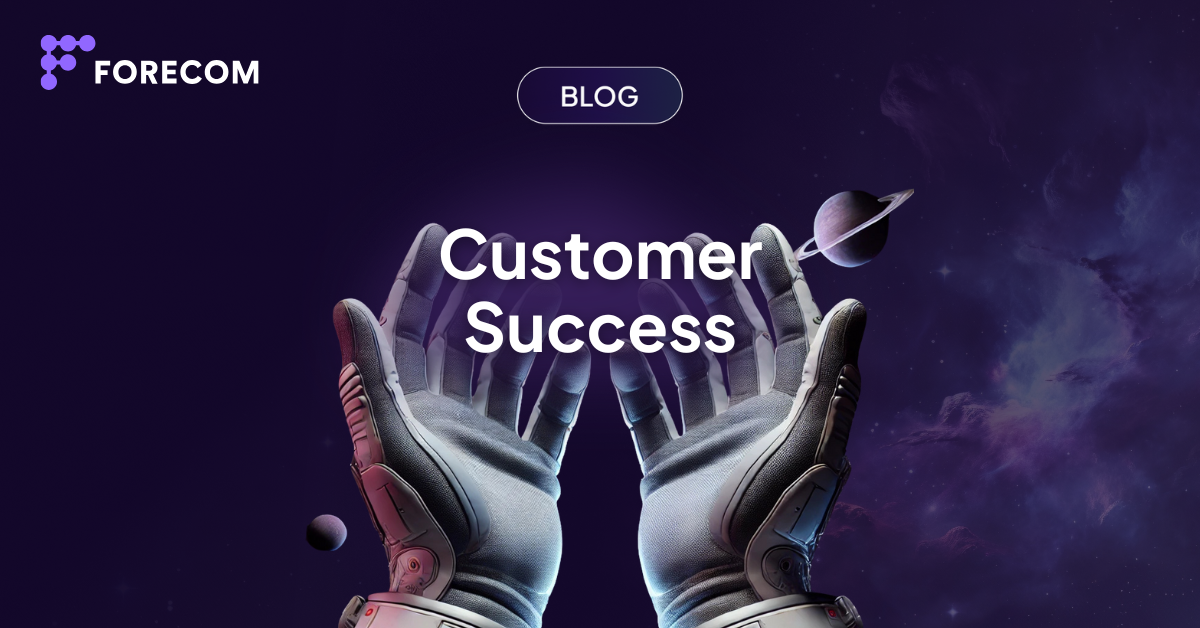In this article, we'll take a look at performance advertising campaigns on social media. We'll explore how they work, why they're often the preferred advertising model, potential implementation challenges, and trends that could define their future.
Obsah
The Power of Performance Advertising on Social Media
How Performance Advertising Campaigns Work
Benefits of Performance Advertising Campaigns on Social Media
Case Study and Practical Examples
Future of Performance Advertising on Social Media
Introduction
In the ever-evolving world of digital marketing, performance advertising campaigns on social media have gradually become a game-changing strategy. This effective advertising model, which focuses on tangible results instead of mere visibility, has significantly changed the way companies promote their products or services online.
Whether you're looking to advertise on Facebook, LinkedIn or Twitter, this article will tell you everything you need to know about performance campaigns to help you increase the effectiveness of your ads. In the following picture, we have prepared an overview of the most popular social networks, including their characteristics:

The Power of Performance Advertising on Social Media
Nowadays, it is increasingly challenging to stand out and catch the attention of potential customers. While traditional advertising models remain relevant, they are often unable to guarantee tangible results despite significant investment. It is for this reason that performance-focused social media advertising has come to the fore, giving advertisers a new level of control.
Instead of focusing solely on the reach of the ad, it emphasises the action that the audience takes in response to the ad. This approach is based on the concept of paying for actual results such as clicks, shares, downloads, registrations or purchases. This gives advertisers greater certainty of a return on their investment.
This strategy has also contributed to improvements in advertising content and targeting techniques. When the success of a campaign depends on the user's action, it forces marketers to better understand their audience, create more engaging content and fine-tune targeting.
Arguably one of the most powerful aspects of performance advertising on social media, however, is its scalability. Regardless of the size of the business or the budget available, this type of advertising offers a viable and effective advertising system. Whether it's a small start-up looking to establish itself in the market or a large corporation looking to improve its online presence, this model scales to suit all sizes and types of business objectives.
How Performance Advertising Campaigns Work
The modus operandi of performance advertising campaigns lies in their name - performance. But to fully understand how it works, we need to understand a few key terms and concepts.
- Key Performance Indicators (KPIs): these are pre-defined goals that determine the success of a campaign. KPIs can vary depending on the company's goals. For example, an e-shop may focus on conversions (sales), while a software company may prefer to focus more on lead generation (signing up for a free trial).
- Click-through rate (CTR): CTR is the number of clicks on an ad divided by the number of ad impressions. This metric is often used to measure the effectiveness of an ad campaign.
- Cost Per Click (CPC): This is the amount an advertiser pays each time a user clicks on their ad. CPC is one of the most common pricing models in performance advertising campaigns.
- Conversion Rate: the conversion rate is the percentage of users who take the desired action after clicking on an ad. This action can be anything from making a purchase to signing up for a newsletter.
Here is a simplified explanation of how performance-based advertising works:

- Campaign setup: an advertiser starts by defining their campaign goals and KPIs. This could be increasing website traffic, generating leads, increasing sales or encouraging app installs.
- Ad creation and launch: the ad is designed to match the campaign objectives and target a specific audience using various demographic and psychographic parameters.
- Performance tracking: Once an ad is launched, you need to continuously monitor its performance based on pre-defined KPIs. This task is facilitated by analytical tools offered directly by social media platforms or third-party applications such as HubSpot, whose benefits related to marketing, sales or customer service can be found in our article.
- Pay for performance: the advertiser pays based on the performance of the ad. For example, if the objective of the ad is to increase traffic to a website, the advertiser pays for each click that brings a user to its website (CPC model).
- Campaign optimisation: The data collected from the performance of the campaign is analysed to gain certain insights. These insights are then used to adjust and optimize the campaign, thereby increasing its effectiveness and ROI.
This social media performance advertising approach ensures that you are investing in results, not just visibility.
Benefits of Performance Advertising Campaigns on Social Media
This advertising model offers a number of advantages over traditional promotional methods:
- Measurable ROI: The biggest advantage of this type of advertising is its measurability. Advertisers are able to directly link costs to results. So whether it's click-through rates, conversions or downloads, every action can be tracked, measured and linked to the cost.
- Cost-effectiveness: performance advertising ensures that you only pay for results. This helps prevent unnecessary ad spend, making your advertising more cost-effective. Whether it's cost per click (CPC), cost per acquisition (CPA) or cost per install (CPI), you only pay for actions that align with your business goals.
- Targeted Marketing: this advertising model allows you to narrow your audience based on various factors such as demographics, interests or behaviors. This precise targeting increases the likelihood of reaching those users who are more likely to take the desired action, increasing the overall effectiveness of the campaign.
- Improving ad quality: since advertisers pay for performance, there is an intrinsic motivation to create high-quality, engaging ads. This focus on quality not only helps businesses stand out in the crowded social media landscape, but also improves the user experience, leading to better brand perception.
Challenges and Solutions
Performance advertising on social media brings a number of benefits, but also some challenges. Here are some of them, including proposed solutions:
Setting the Right Performance Goals
Determining what to measure can sometimes be a challenge. Companies can get carried away with vanity metrics that don't contribute to the bottom line. The solution to this problem is to align performance targets with business objectives. Prioritize metrics that directly impact your ROI and don't just focus on likes or shares.
Understanding Audience Behavior
Estimating how your target audience will react to your ads isn't always easy. To overcome this factor, take advantage of audience analysis tools offered directly by social media platforms or consider surveying your users to understand their preferences. Also, don't forget to test different ad formats.
Ad Optimization
Striking a balance between engaging creative content and optimizing performance can also be tricky at times. This can be overcome by A/B testing different ad elements such as headlines, images or CTAs to see what delivers the best results.
Adapting to Platform Changes
Social media platforms frequently update their algorithms, which can affect ad performance. Keeping up with the latest changes and adjusting your strategy accordingly can help minimize this issue. To stay informed, join expert forums or subscribe to newsletter about digital marketing.
Privacy Policy
As privacy regulations increase, tracking advertising performance can become more complex. Make sure you're complying with all relevant privacy laws, and consider investing in privacy-friendly monitoring systems.
Budget Constraints
Competing with larger advertisers with bigger budgets can be a challenge for smaller companies. To overcome this problem, focus on defining your target audience more precisely and creating highly relevant ads. It's better to have a smaller and more engaged audience than to reach a broad audience that has little to no interest in your offerings.
Case Study and Practical Examples
MVMT Watch
MVMT Watches, which focuses primarily on online sales, aimed to drive more sales and increase brand awareness. They chose Instagram as the main platform for the performance advertising campaign due to its visual nature and the presence of the target audience.
They created visually appealing ads highlighting their sleek watch design and didn't leave out enticements such as free shipping to increase conversions. By focusing on cost per acquisition (CPA), MVMT Watches only paid when a sale was made through the ad.
The campaign led to increased sales and showed how performance advertising can lead to direct business results.
Future of Performance Advertising on Social Media
As you can see, social performance advertising has firmly established its place in digital marketing. Looking to the future, several trends and advancements are likely to determine the evolution of this advertising model:
- Advances in artificial intelligence and machine learning: these technologies continue to revolutionize the approach to advertising. Improved algorithms can more accurately analyse user behaviour, predict future trends and automate ad targeting and bidding strategies, making performance-based advertising even more efficient and effective.
- Greater focus on privacy: as privacy concerns grow globally, advertisers will need to find ways to deliver personalised ads while respecting users' privacy. This could include using first-party data more effectively or using contextual targeting techniques that do not rely on personal data.
- Increased use of video and interactive content: video and interactive content formats are increasingly popular due to their ability to engage users and encourage action. Advertisers should invest more in these formats in the future, pushing their creative boundaries even further.
- Omnichannel marketing: the customer journey is becoming more complex and involves multiple touchpoints on different platforms. Advertisers should therefore adapt to a multi-channel approach as quickly as possible, tracking and optimizing performance across all channels to ensure a seamless customer experience.
- The rise of social commerce: social media platforms are increasingly integrating e-commerce features that allow users to shop without leaving the app. This presents more opportunities for performance advertising as conversions occur directly on the platform.
- Improved measurement and attribution models: With better tools and techniques to measure ad performance and attribute conversions to specific ads, advertisers will be able to understand ROI more easily.
Conclusion
Performance advertising on social media is a results-driven approach that ensures advertisers only pay to achieve a goal. This model focuses on measurable outcomes such as click-through rates, conversions or installs, and ensures a cost-effective return on investment.
While performance advertising campaigns also present some challenges, such as setting the right goals and adapting to evolving platforms, strategies such as A/B testing and continuous upgrades can overcome them. Companies using this model while innovating and adapting to trends will continue to maximize advertising ROI, achieve tangible business goals and increase customer engagement.
Want to improve your social media marketing strategy? Whether your goal is to increase brand awareness, conversions or customer interactions, our experts can help you find the perfect solution. Don't hesitate to schedule a consultation.
And if you're interested in our article, you can read our next article on Performance Marketing Trends for 2023, where you can learn some interesting facts about incorporating AI into your advertising campaigns, for example.
FAQ
1. What is performance advertising on social media?
It is an advertising model where payment is based on ad results such as clicks, conversions or installs.
2. Why should companies use performance-based advertising?
It offers measurable ROI, cost-effectiveness, targeted marketing and allows for real-time optimization.
3. How does a performance-based advertising campaign work?
Advertisers set goals, track ad performance, and pay based on achieving those goals.
4. What does the future of performance advertising look like?
Future trends include advances in artificial intelligence, greater emphasis on privacy, greater use of video content, and improved measurement models.
5. How can a company implement performance advertising?
Start by setting goals, determining the target audience, designing the ad, setting up tracking, and optimizing based on performance data.
6. How can performance advertising help small businesses?
It is cost-effective, allows for precise targeting, and allows you to scale campaigns based on performance.
Topics: Marketing Performance Marketing


















